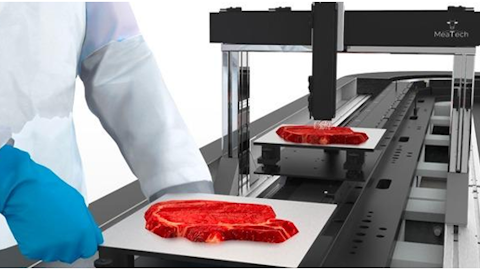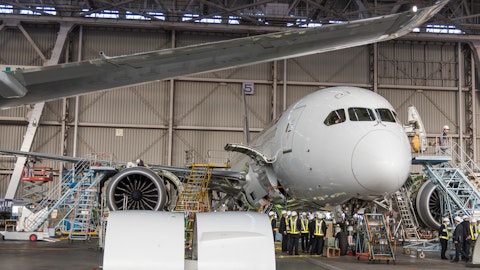Andrew Bonfield: Hi, Nicole.
Nicole DeBlase: Just on the retail sales trends this quarter, there was a deterioration across like both of the machines businesses in EAME. Can you just talk about what you’re seeing from that region? I think there have been some indications of a little bit of slowing in Europe. So would love to hear what’s capturing on the ground. Thanks.
James Umpleby: Yes, we have seen a bit of slowing in Europe, as I mentioned, but Middle East is quite strong. So it’s a mixed bag there. So we’re seeing a lot of strong construction activity in the Middle East, a lot of nonresidential construction projects going on but we have — we are seeing a bit of weakness in Europe around construction.
Operator: [Operator Instructions]. And we will move to our next question from the line of Steve Volkmann with Jefferies. Your line is open.
James Umpleby: Hi, Steve.
Stephen Volkmann: Good morning guys. Thanks for taking the question. I wanted to just ask a little bit about productivity because I guess I’m hearing you say that supply chain is improving, but there’s still issues. Are there still kind of productivity headwinds or penalties that you’re paying in the factories because the supply chain is not yet as smooth as we’d like it to be? And obviously, I’m trying to think about whether there’s some margin opportunity when supply chains — when and if supply chains are sort of normal again.
James Umpleby: Yes. As I mentioned, because we do have some supply chain constraints, overall, the situation has improved, there’s no question. But it’s like we’ve gone to six pages of shortages for certain machine. It’s down to one page, that’s an improvement, but you still have some shortages that you have to deal with and has not allowed us to operate our factories as lean as we have in the past and as lean as I would like them. So again, I do expect that as supply chain conditions ease in the future, we should be able to get back to running our factories with more just-in-time manufacturing, leaner, which should help us reduce — increase inventory turns and reduce the amount of absolute inventory we hold based on a current level of sales. So an opportunity to answer your question.
Stephen Volkmann: Thank you.
Operator: Your next question comes from the line of Tim Thein with Citigroup. Your line is open.
Timothy Thein: Thanks. Good morning. Just a question on parts — yes, just on parts. I guess we can broaden it to Cat across the board. But specifically, I was interested in the comment on RI for down volumes. Is that just maybe a function of kind of prioritizing whole goods just in light of the constrained availability? Or is that — I would imagine there’s notch by way of destocking going on with the dealer. So maybe just any more comments you have just on that comment on parts volumes in RI? Thanks.
James Umpleby: Maybe just to start with overall. So certainly, the services sales were up year-over-year, and we have seen fluctuations in dealer buying patterns, which impacts volumes. Services, dealer sales to customers were up in the quarter, and availability has improved. So our ability to ship parts to our dealers has improved, and that has had an impact on it as well. So again, not concerned about it, but it really is just a function of as our availability improves, dealers oftentimes conclude they’re able to held a bit less inventory, which will have an impact.
Operator: And your next question comes from the line of Chad Dillard with Bernstein. Your line is open.
James Umpleby: Hi, Chad.
Chad Dillard: Hi, good morning guys. How are you? So I wanted to focus mainly on Construction Industries. And I just wanted to get a better sense of — for your orders that came in the quarter, can you just give us a rough breakdown between retail versus stock? And then look, as you’re thinking about like inventory shift, you do that really helpful stat about 70% is retail for E&T and Resource Industries. Could you do the same for Construction Industries?





